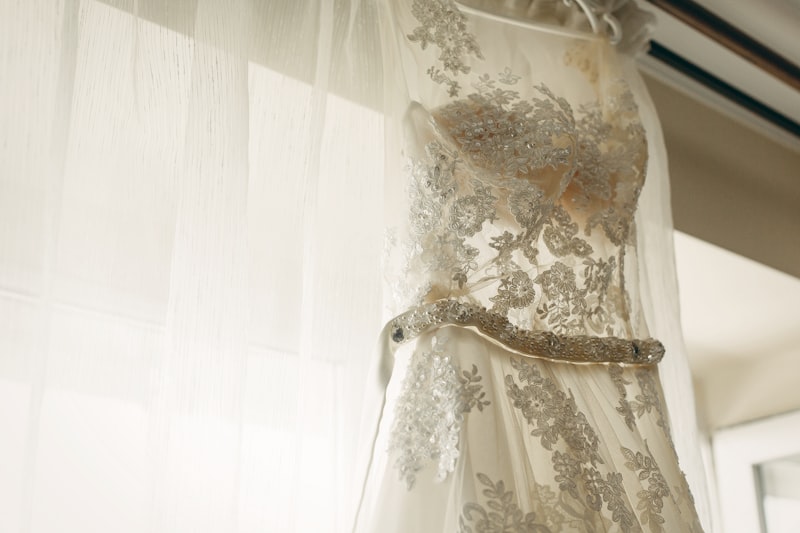Understanding Quality Standards for Wedding Dress OEM Production
Understanding Quality Standards for Wedding Dress OEM Production
Introduction to Wedding Dress OEM Production
In the ever-evolving world of fashion, Wedding Dress OEM (Original Equipment Manufacturer) production has gained substantial recognition. Businesses looking to produce high-quality wedding dresses often seek OEM partners who can deliver products that meet specific quality standards. This article explores the essential quality standards for Wedding Dress OEM production, discussing various aspects such as materials, craftsmanship, design adherence, compliance with regulations, and more.
What is OEM Production?
OEM production refers to a practice where a company manufactures products based on another company's design specifications. In the context of wedding dresses, this often means that a designer or brand collaborates with a manufacturer to create garments that align with their unique vision and quality expectations.
Why Quality Standards Matter
Establishing quality standards in Wedding Dress OEM production is crucial for maintaining brand reputation and customer satisfaction. High-quality standards ensure that the end product is not only aesthetically pleasing but also durable and comfortable to wear. Below are some of the pivotal quality standards that should be considered:
| Quality Standard | Description |
| Material Selection | Choosing high-quality fabrics that feel luxurious and last long. |
| Craftsmanship | Ensuring impeccable stitching and finishing for durability and aesthetics. |
| Design Adherence | Following the original designer's specifications closely to maintain brand identity. |
| Regulatory Compliance | Meeting legal requirements and industry standards in production. |
| Fit and Comfort | Designing dresses that provide a flattering fit and comfort for brides. |
Key Components of Quality Standards
Wedding Dress Quality StandardsTo achieve high quality in wedding dress production, several components must align. Let's delve into each of them:
1. Material Selection
The choice of fabric is paramount. Quality fabrics like silk, lace, satin, and chiffon not only enhance the dress's appearance but also contribute to its durability. Suppliers must ensure that the materials are free from defects and meet safety standards. For instance, using hypoallergenic materials can be essential for brides with sensitive skin.

2. Craftsmanship
Attention to detail in craftsmanship is non-negotiable. Excellent stitching, lining, and finishing techniques need to be employed to avoid issues like fraying, puckering, or uneven hems. OEM manufacturers should have skilled workers who are experienced in bridal wear production. Regular quality checks during production can prevent flaws from being passed on to the finished product.
3. Design Adherence
OEM partners must closely follow the original design specifications. This includes correct measurements, patterns, and style elements. Deviating from the design can lead to a loss of brand integrity. Using CAD (Computer-Aided Design) technology can help maintain precision in reproducing designs.
4. Regulatory Compliance
Production must adhere to local and international regulations regarding textile production. This includes compliance with safety standards, labor laws, and environmental regulations. For instance, some regions require certifications related to the materials and processes used in production, such as Oeko-Tex certification for safety in textiles.
5. Fit and Comfort
A wedding dress should not only look beautiful but also fit the wearer perfectly. Ensuring the dress allows for movement and comfort is vital, especially for such significant occasions. Manufacturers should offer a range of sizes or customizable options to cater to diverse body types.
Quality Control Processes
To uphold quality standards throughout the production process, manufacturers should implement rigorous quality control processes. This includes:
- Pre-Production Checks: Inspecting materials upon arrival.
- In-Production Quality Checks: Regular inspections during production.
- Final Inspection: A thorough examination of finished products before shipping.
Key Challenges in OEM Production
While striving for quality, OEM manufacturers face several challenges:
- Managing Supplier Relationships: Ensuring your suppliers meet quality standards can be challenging.
- Adapting to Trends: Fashion trends change rapidly, and keeping up can be difficult for manufacturers.
- Quality Assurance:** Ensuring consistent quality across batches can be challenging, especially with varying production environments.
Conclusion
Quality standards in Wedding Dress OEM production play a crucial role in maintaining the reputation and success of a bridal wear brand. By focusing on key aspects such as material selection, craftsmanship, design adherence, compliance with regulations, and overall fit, manufacturers can deliver products that meet customer expectations.
For brands looking to work with OEM partners, it is paramount to establish clear communication and outline specific quality standards before commencing production. Regular quality assessments can ensure that standards are maintained, ultimately leading to enhanced customer satisfaction and loyalty. As the bridal industry continues to evolve, adhering to these quality standards will set brands apart in a competitive marketplace.
Final Thoughts and Recommendations
When venturing into Wedding Dress OEM production, keep in mind the importance of quality. Regularly review and refine quality benchmarks as trends and consumer expectations shift. It might be prudent to invest in training for your OEM partners to ensure they understand your vision and standards completely. Always prioritize building strong relationships with suppliers who share your commitment to excellence, as this will pay dividends in the quality of your final product.
